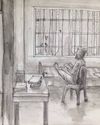New DNA evidence is making the story of India’s past clearer than ever

At a seminar in Delhi in the first week of July, Vasant Shinde, an archaeologist and the vice chancellor of Pune’s Deccan College, said that in late September or early October, we should expect a paper that will significantly contribute to our understanding of ancient India. The paper will reveal the results of DNA tests on human skeletons uncovered at Rakhigarhi, Haryana, the most extensive of all Harappan civilisation sites, where excavations supervised by Shinde are still underway.
The DNA results should go some way towards settling the question of the genetic relationship between the people of the Harappan civilisation and the current population of the subcontinent. What the DNA tests reveal—say, if they show that the Harappans had a close genetic affinity to the Indo European language speakers who composed the Vedas, or to the Dravidian language speakers of the south—will not only shed light on the Harappans. It will also affect almost every question regarding the evolution of Indian civilisation after the decline of the Harappans—including the question of the possible migration of Indo-European speakers from outside the subcontinent into north-west India: the famous Aryan migration or invasion theory.
This story is from the August 2017 edition of The Caravan.
Start your 7-day Magzter GOLD free trial to access thousands of curated premium stories, and 8,500+ magazines and newspapers.
Already a subscriber ? Sign In
This story is from the August 2017 edition of The Caravan.
Start your 7-day Magzter GOLD free trial to access thousands of curated premium stories, and 8,500+ magazines and newspapers.
Already a subscriber? Sign In

Mob Mentality
How the Modi government fuels a dangerous vigilantism

RIP TIDES
Shahidul Alam’s exploration of Bangladeshi photography and activism

Trickle-down Effect
Nepal–India tensions have advanced from the diplomatic level to the public sphere

Editor's Pick
ON 23 SEPTEMBER 1950, the diplomat Ralph Bunche, seen here addressing the 1965 Selma to Montgomery March, was awarded the Nobel Peace Prize. The first black Nobel laureate, Bunche was awarded the prize for his efforts in ending the 1948 Arab–Israeli War.

Shades of The Grey
A Pune bakery rejects the rigid binaries of everyday life / Gender

Scorched Hearths
A photographer-nurse recalls the Delhi violence

Licence to Kill
A photojournalist’s account of documenting the Delhi violence

CRIME AND PREJUDICE
The BJP and Delhi Police’s hand in the Delhi violence

Bled Dry
How India exploits health workers

Status Update
India’s telling silence on the Hagia Sophia controversy